Last week I hopped in my car, drove three hours, hopped on a plane to Vegas and began what was ultimately a several thousand mile journey to the most beautiful waterfalls in the United States.
Up there with the Wave, the Enchantments, and the John Muir Trail, the trail to Havasu Falls in the Grand Canyon (known colloquially as “Havasupai”) is one of the most difficult hiking permits to land in the Untied States.
When Aubree, a person I knew through the internet only, was looking for someone to apply for permits with, I thought I’d throw my name into the ring. I’m a planner, the sort of person who exclusively does things that make sense. I work as an outdoor guide and writer, and pretty much all of my trips have been for work. I didn’t have a reason to go to the Grand Canyon, other than that I’ve never been, and I’ve always wanted to.
To be honest, after a quick search of the internet, I was pretty sure that we would not get permits, even with our late March dates in mind. After COVID shutdowns in 2020, 2023 was the first year the hike had reopened, and it seemed like many people who had been rescheduled were looking to go. We hopped on the February presale to book, and sure enough, were able to score permits for a weekend in March.
oh hey there! I’ve included a lot of images in this post because it was SO beautiful! That means you might have to click “load images” for optimal viewing experience. It may also appear as “view entire message”. Either way, you’ll want to click that!
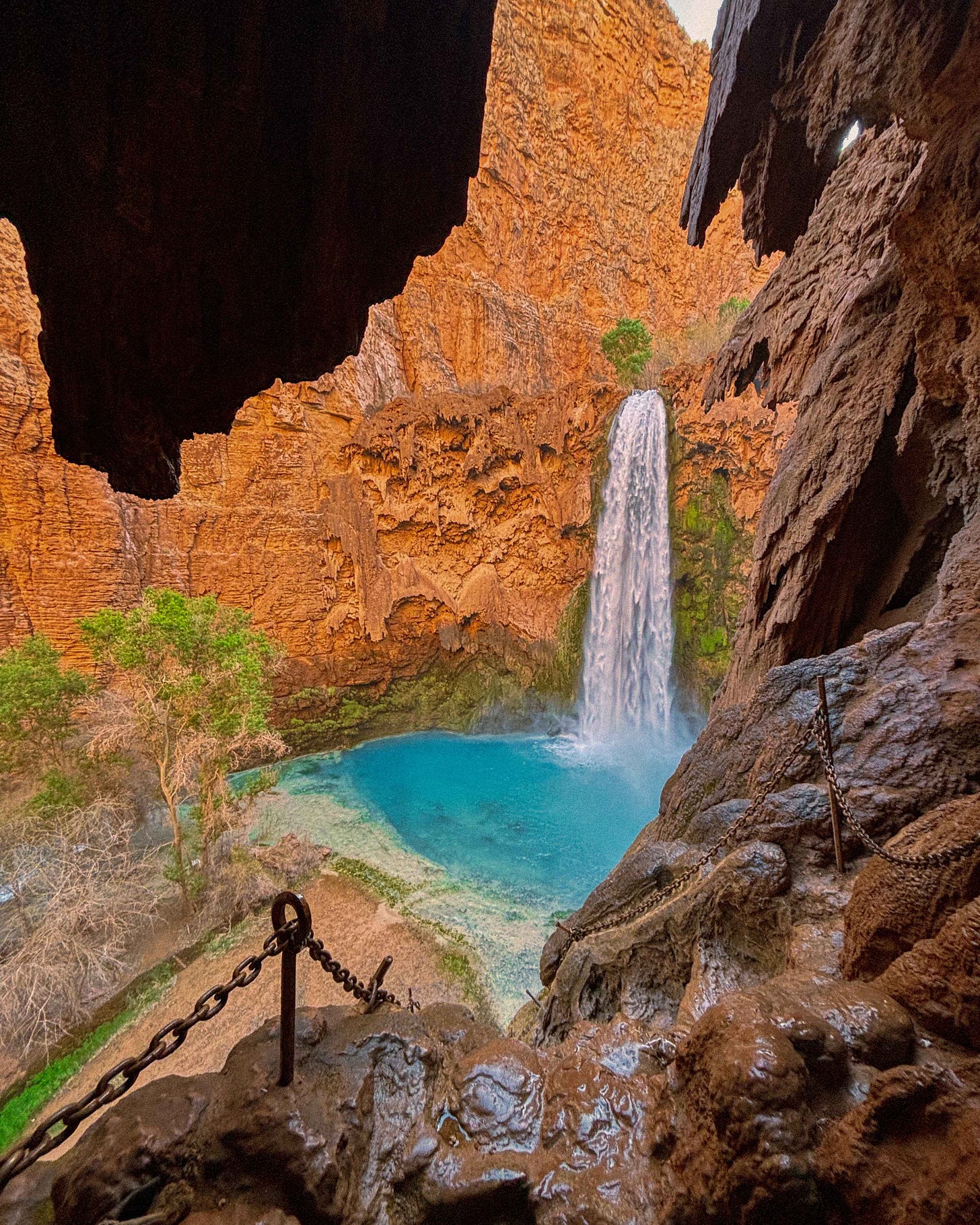
My Grand Canyon love story started when I was little, reading National Geographic atlas’ and thinking about all the wonderful places I would go when I was big. I wanted to kayak with orcas (check), and live abroad (check), and see the Grand Canyon.
I live in Northern Minnesota now, where it’s cold most of the winter. I had been to desert once, as a kid, all hazy memories but mostly I remember the big tall cactuses and a zoo or something maybe, and that my Grandparents lawn was full of rocks. So last week I hopped on a flight to Vegas to meet up with an internet stranger.
Fun fact! Upon meeting each other at the airport we both promptly had to call our mothers to let them know we were not being murdered; even though we had facetimed several times before heading out and both have pretty involved social media presences, they were both not convinced. We thought that was pretty funny! Next time we’ll just have the moms exchange numbers in advance. Also hi mom, love you.
It’s hot in the Valley of Fire, our first stop on the way to the Canyon. At pushing 80 F, I think it’s probably hotter than I felt all summer out guiding on the Pacific, and maybe even the summer before that. We talk and hike over sand and red hills, trail full of families and dads with big cameras.
I’ve always liked that about popular places— it reminds me of when my family of six went to visit my Grandparents in Florida and went to see the manatees and Grandpa video taped the whole thing. My sister and I hung our heads over the spring watching the manatees carefully.
In Valley of Fire, two kids run down a hill, yelling. While today I most often seek out quiet trails, it was on trails like this one full of families that I got my first taste for adventure.
We don’t hike far, just enough to move our legs after our early morning flights. We drive three more hours then check into a motel not far from the trailhead, grab dinner and repack our backpacking bags; we’re hoping for an early morning. I am shocked by how cold it is at night when the daytime felt like the peak of summer.
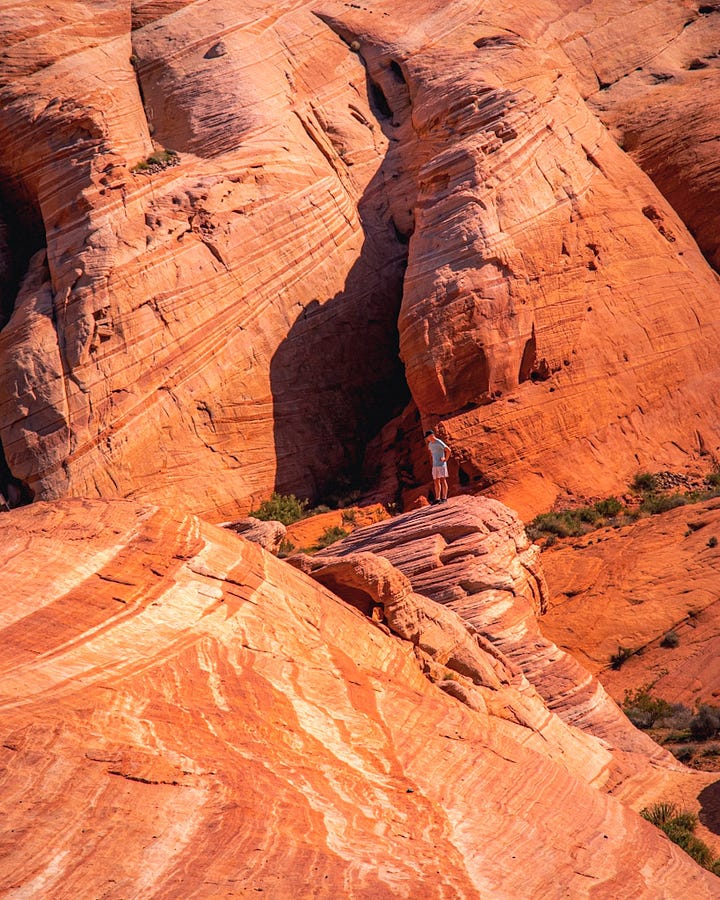
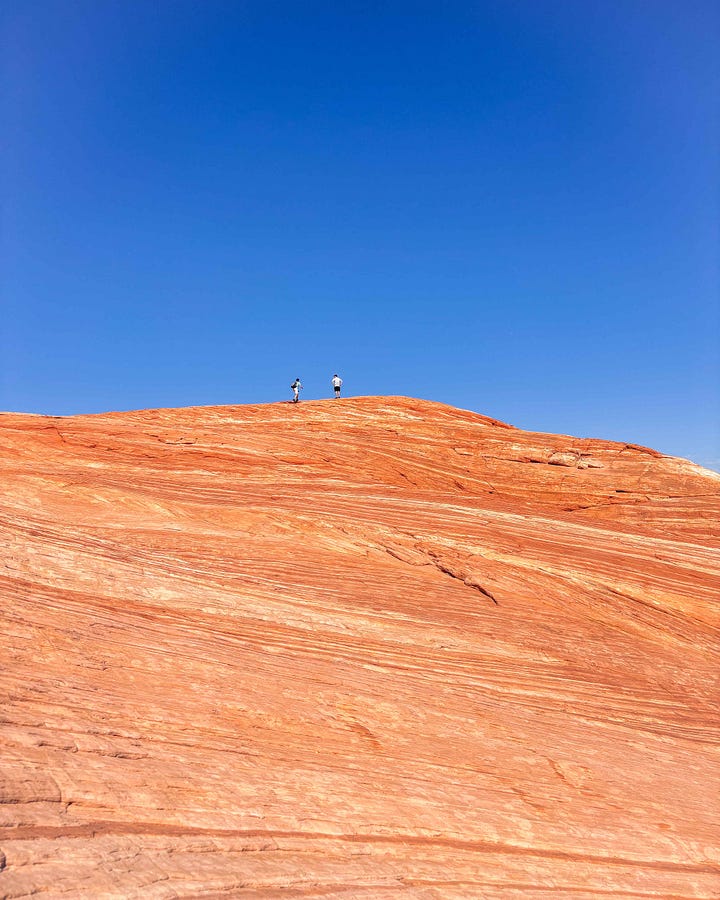
The check-in point for the Havasu Falls Trail is still about an hours drive from the actual trailhead and we check in at 8am before driving towards the canyon. Blue skies and rolling hills with cows as we drive towards the canyon. There’s a second checkpoint on the road in to make sure you’ve got your permits and you’re not transporting alcohol; alcohol is not allowed on the Havasupai Reservation.
I’ve heard stories of people being asked to unpack their bags and having their cars searched for alcohol; you’re on sovereign land on a reservation and different rules apply. Aubree and I are apparently not suspicious with our relatively small backpacking bags— which is fair. We’re not carrying any more weight than we absolutely have to.
We park on the rim and begin our hike down around 10 am, later than most people we figured. The trail begins with switchbacks down the canyon for the first mile. We leap out of the way for the mules, transporting supplies for the town and tourist bags for the people who didn’t want to carry a pack down into the canyon.
All said and done, the Havasu Falls Trail is a 10-mile hike one-way into the canyon to reach the campground. The way down is all decline with no relief. The hike back up, the opposite. All said in done, most people hike close to 30 or so miles in a long weekend at the falls.
Their are five or so major waterfalls along the trail— Fifty Foot Falls and Lower Navajo Falls you encounter pretty quickly after reaching Supai (the town), and then Havasu Falls, the most photographed, is before the campground, followed by Mooney Falls. Beaver Falls is another 2.5 mile hike beyond Mooney, and involves the sketchiest cliff hike I’ve ever seen in my life, so we did not do that one!
The most interesting part of the Havasu Falls Trail, and the reason for the complex and expensive permitting process, is that the entirety of the hike is not actually located in Grand Canyon National Park, rather on the Havasupai Reservation.
The Havasupai people have lived in the Grand Canyon for over 1,000 years. For hundreds of years, the Havasupai, meaning “people of the blue green water”, utilized the entirety of the Grand Canyon. They spent summers in the canyon tending gardens, and winters on the Colorado Plateau hunting. In the 1920s, the Havasupai were forcibly removed from the Canyon by the National Parks Service and confined to Havasu Canyon and the village of Supai. Havasu Falls and the area between Havasu and Mooney Falls were taken for the National Parks Service, leaving the Havasupai with limited access to a sacred space once used for cremations.
It wasn’t until 1975 that the Falls area and a significant amount of land was returned to the Tribe with the stipulation that the area remain open to tourism. Not that the Havasupai had much choice anyhow— cut off from traditional hunting and farming land as well as spiritual areas, turning to tourism likely felt like the only option. It’s easy to imagine the complicated feelings towards tourists that would arise.
Still it wasn’t until 2023 that “Indian Gardens”, a popular destination in the Grand Canyon National Park and a traditional Havasupai farming area, was rechristened to Havasupai Gardens or “Ha’a Gyoh”.
Today in the village of Supai, eight miles deep into the canyon with a population around 500, tourism is the biggest source of income. The extremely competitive permits to hike to the fabled blue green waterfalls run at $455 a person in 2024.
The hike into the canyon feels like hiking through time, because it is. You start at the newest layer of rock, Coconino Sandstone and hike down, each new sandstone marking an older era. Eventually you reach the layer with limestone deposits, which is where Havasu Creek begins.
Downward we hike, white rock becoming deep red canyon walls, bright green trees springing up in the dried streambeds, until we reach the first glimpse of teal blue water, a stark contrast to the desert orange and reds all around.
It’s soon after that that we reach the town of Supai. Out of respect for the locals, photos of Supai are not allowed, and so I have none.
The are no roads to Supai; just an 8-mile path through the canyon or a helicopter that flies in an out a few times a day. All around you is red canyon wall, except where the creek has turned everything green and alive. Each house has a plot of garden and trees, satellite dishes and many have fresh paint. Contrary to the reports of the village I had read online, it looks lovely. Sure, there are broken things in places, just like anywhere else, but at eight miles deep in the Grand Canyon I imagine the cost of fixing things is a little higher than in a suburb.
Two smiling kids call at us from their yard in unison “Welcome to Supai! We hope you enjoy your stay!”. From a porch, their mother laughs and shakes her head.
There’s something in the air, the feeling of spring in the desert, the fresh green on trees, the red rock, a village tucked around a river with beautiful gardens outside their homes that reminds me viscerally of Armenia. Earlier I said I had never been to the desert except as a child, but that’s a lie.
From March 2019-2020, I lived and worked in a small town in the Armenian desert, co-teaching English to 2-7th grade. I’m not sure if it was that the gardens were growing just like my host families did, or the red rock and dry air, or the way the kids giggled at us and the feeling of being a young blonde foreigner, or just that it was spring in a desert the same way it was when I was sent back to the US on about a day’s notice, but eight miles in I couldn’t shake the heavy reminders that I haven’t yet been back to Armenia, and now it’s been four years. It’s well past time.
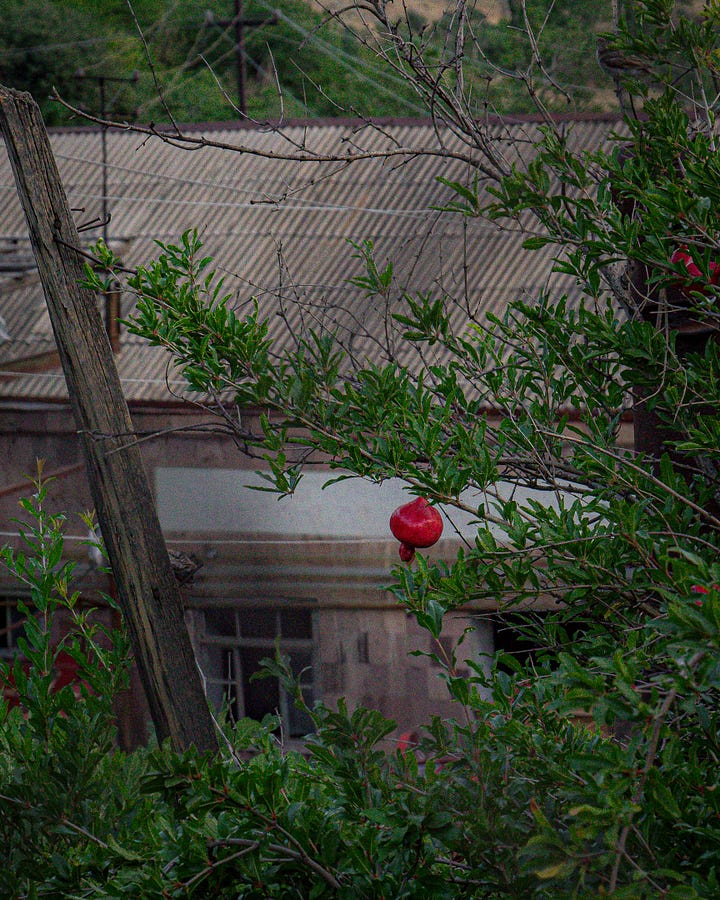
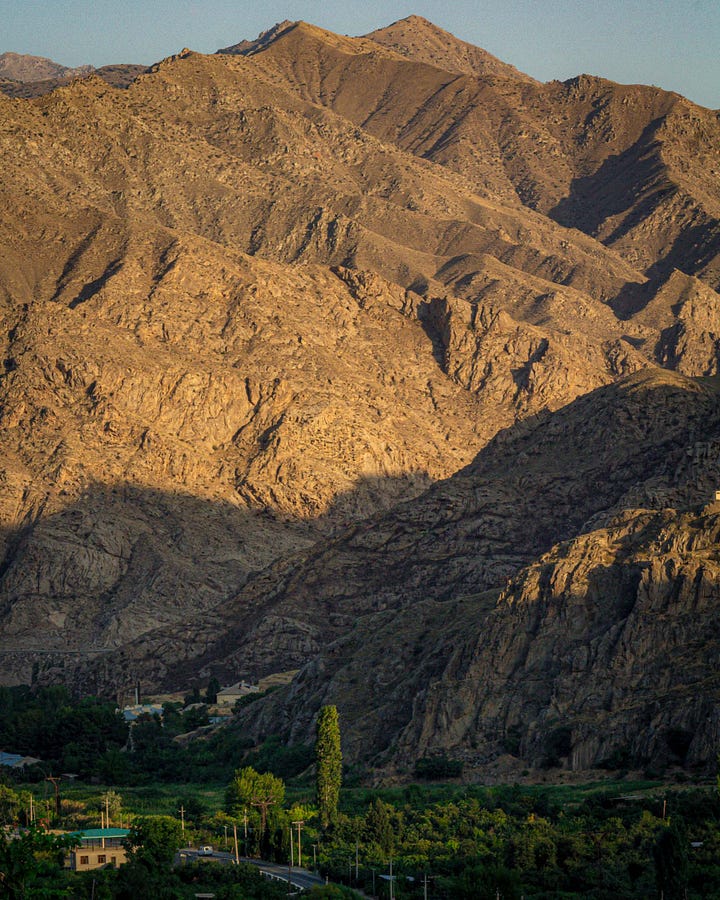
It’s around this point, the village of Supai and the 8-mile mark that we both start to feel the physical impacts of having hopped on a backpacking trip in the desert with no training. Even though I don’t feel much older than I was when I left Armenia, I’m 28 now and my body doesn’t just magically bounce into shape like it used to.
We make it to the campground feeling physically wrecked— one thing about backpacking is that the downhill, especially continuous downhill, is that it’s hard on your body. We make camp, and spend the evening and next day recovering and playing in waterfalls.
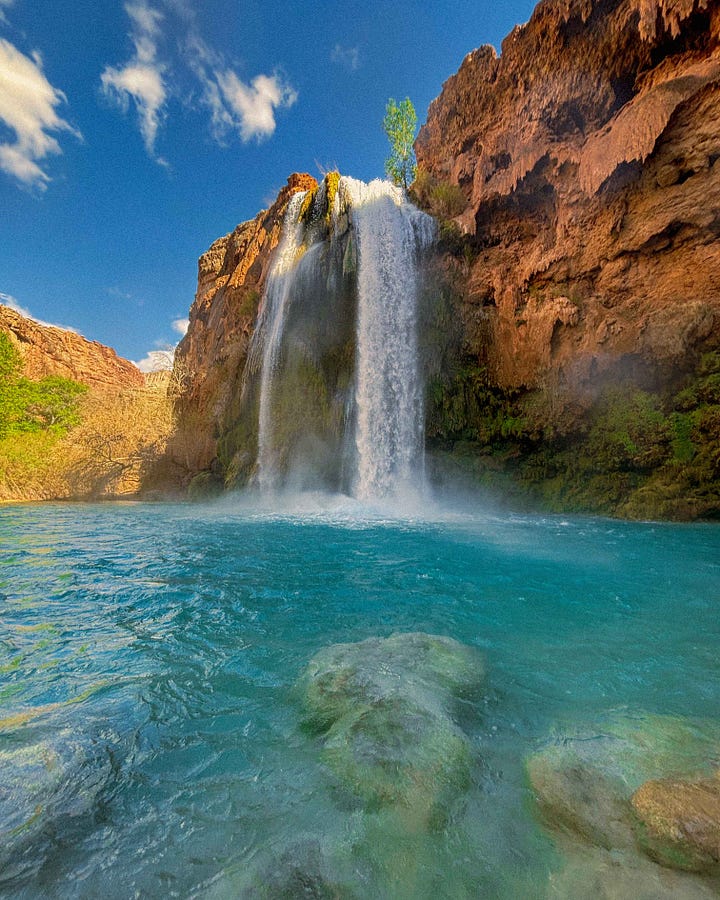
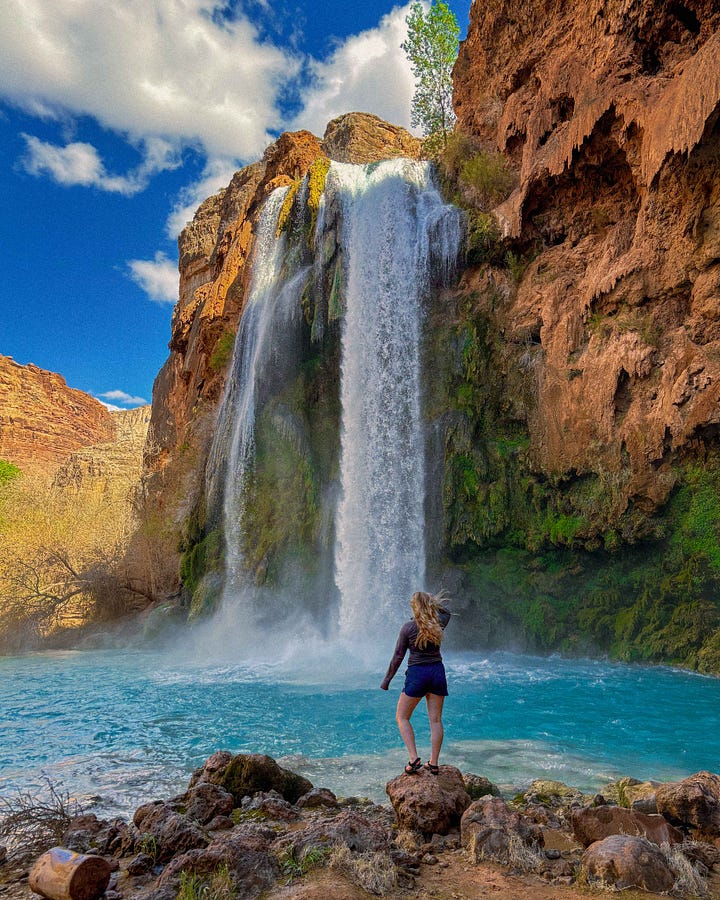
With the 2024 Havasupai permit price hikes, the question on everyone’s minds seems to be “is the permit cost of Havasupai worth the hike?”.
And I think that’s a hard question to answer.
For me, flying out from the Midwest, the permit, a rental car, a hotel on either end, food, and then two days exploring the area around Vegas to make for a full one-week of travel came to about $1800 even (this figures in the costs split with Aubree like hotels and gas). You could do it for cheaper with a bigger group to split costs further and going directly to and from the airport on either end or flying a budget airline (a little more difficult with a backpacking bag), but I’m 28 now and not sleeping on an airport floor if I can avoid it.
In a way, the $455 permit is worth it simply because that is what it costs for an Indigenous community living in the Grand Canyon to be able to support tourism on this scale.
That said, almost $2000 is a lot more than I spend on the typical backpacking trip. (I might be a bad example because I usually make money on trips like this guiding, but still). I’ll be backpacking the Porcupine Mountains this summer and the total permit cost for four days was just over $60. My backpacking trips on the Superior Hiking Trail have been basically free, with no permits and just grabbing gear I already own and food we have leftover.
The falls are incredible. The campground is crowded— this is a destination and an experience, not really a wilderness hike. The feel is more pilgrimage, less navigating the wild. Even though the temperature hovered in the high 60s, we were able to comfortably swim. The hike itself is beautiful.
And I do think I would do it again— it’s such a unique experience that I actually do think the cost is worth it, both in that it supports a really unique community and in that the experience itself of the difficult hike in and out to experience these Grand Canyon waterfalls is really unlike anything I’ve ever done before.
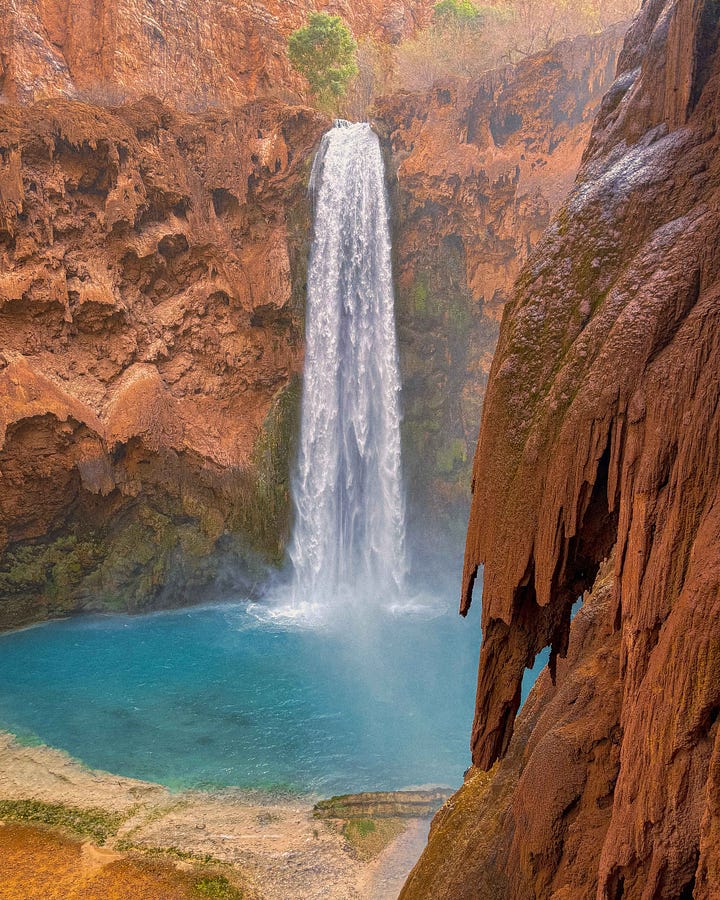
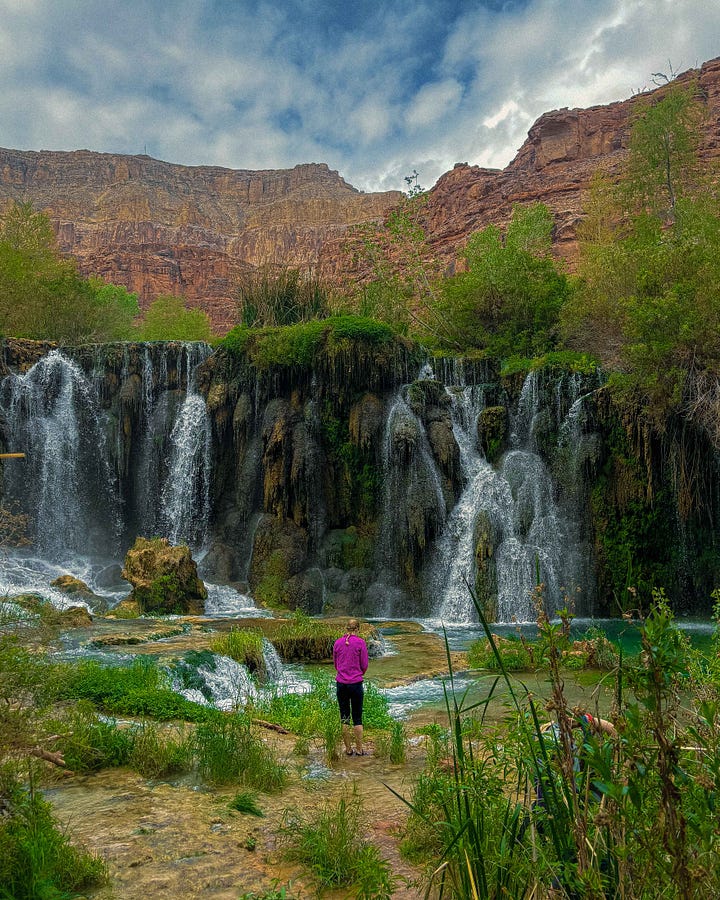
On our last day, the forecast promises snow. Though we could swim in the daytime, the nights were cold enough to use my zero degree sleeping bag. I wake up at 4:30am, well before my alarm and begin to pack down for the hike out.
If there’s one thing I love about time on trail, be it for guiding or for personal trips, it’s the mornings. I like to be up before everyone else, all of my gear fully packed, coffee on while light just then begins to filter into the sky.
We hit the trail at 6:20am, deeply worried about the difficulty of the 10 miles uphill, and hopeful to make it to the car by 1pm before the first line of snow squalls hit. The switchbacks and cliff section up to the parking lot isn’t particularly treacherous, but with the forecasted high winds and snow it would almost definitely be unpleasant.
We made it up to the parking lot just afternoon, averaging 26 minute miles, just as the first line of snow hit. In my opinion, the hike up was much easier than the hike in. We just took plenty of short breaks and trucked through it. The uphill hiking is harder mentally, but the downhill is physically grueling.
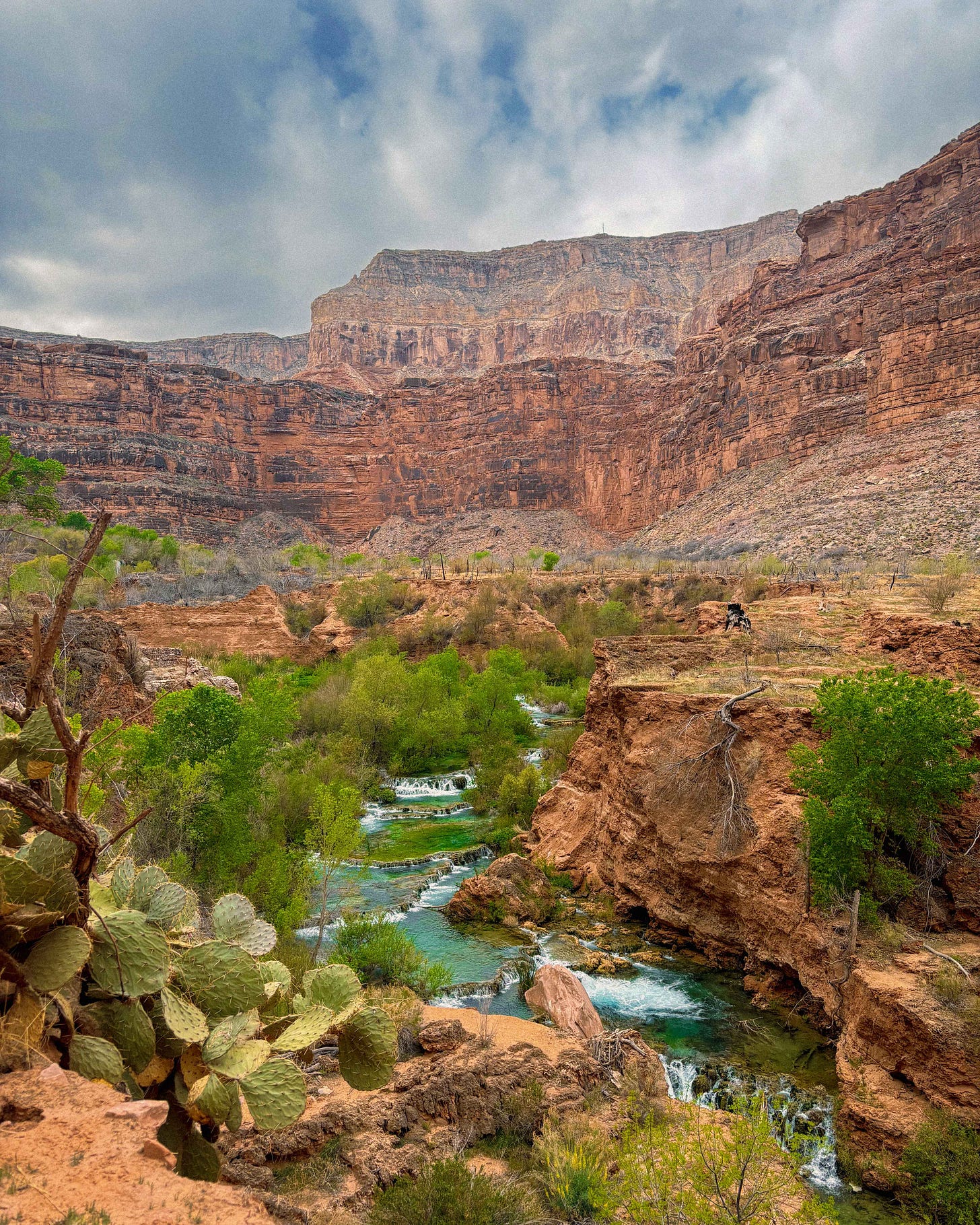
We spend the next day (gingerly, very sore) exploring the Red Rock Canyon area of Vegas, which exceeded all expectations, before we laid in bed for 12 hours straight then caught flights back from whence we came.
FAQs about backpacking Havasupai:
Okay this looks awesome! How do I get permits?
You can make reservations here! Permits are released in early February every year and sell out almost immediately. That said, you can check the cancellation and transfer board if you’re flexible, and you might be able to nab a permit that way.
How hard is the hike? Can I do it with kids?
The hike is definitely not easy. I work as an outdoor guide, have what I would consider to be moderate backpacking experience, and I did not train for the hike. I found the downhill section to be fairly difficult, but didn’t struggle with the uphill.
Overall, I would say that this is a doable hike for anyone who regularly hikes 6+ miles without training. If you come without out of backpacking shape, expect to be sore. I would say this is probably a bad hiking trip for most kids unless you regularly hike with your kids.
Note that people do arrange mule transport for their bags. There have been a lot of questions raised about the welfare of the mules— I am definitely not here to judge how the people living in Supai get their supplies, but I do encourage you to carry your own gear into the canyon. The mule pickup is still two miles from the campground, and the drop off for departures is at 7am. You are better off packing light and carrying your own gear planning wise.
What should I pack for a trip like this? How much backpacking experience do I need?
You can definitely do this trip with little backpacking experience, so long as you research and prep for the right conditions. I would go so far as to say this is actually a really great trail for beginner backpackers because of the town store within walking distance, all of the support options available along the way (other hikers ect), a nearby local clinic, a developed campground, access to water, ect.
Remember to pack light. Because of the nature of the canyon, it’s extremely important to pack out everything you pack in.
Check out my Havasupai Packing list & logistics guide here.
When is the best time of year to backpack Havasupai?
April and May are the most popular months for backpacking Havasupai— after that it gets hot. Honestly even with the snow at the end I would say late March was pretty much perfect, and if I go again I’ll be doing it this time of year.
It was warm but not hot during the day, cold at night, and swimmable water temperatures. If you’re used to the warmer climate, May-June probably makes sense. If you, like me, are from the frozen north March feels like peak summer, sleet and all.
have your own adventure this summer!
Join me on a sea kayaking adventure in my favorite place in the world! My custom Apostle Islands women’s trips (which I am both guiding and teaching basic sea kayak skills on) still have some availability for both July & August! Code Maddy24 for $50 off.
Women’s guided rock climbing at Interstate State Park MN/WI is filling up June 8 and/or 9, but there’s still time to register! Feel free to reach out to me via email to join the group camping near by (girls trip vibes!!)
Planning a backpacking trip this summer? Check out the the best Backpacking trips in the Midwest!
It’s good old mud season in Northern Minnesota, which means it’s time for a Leave No Trace reminder! Remember to hike through the mud and not around it as hiking around can widen the trail
hello stranger and it’s archive of free trail guides and outdoor resources is reader funded! here are a few ways to support this newsletter:
Shop my gear list
Check out the Midwest Adventure eBooks
Consider guest writing! Hello Stranger takes on guest writers periodically— read the guidelines here.
Consider becoming a paying subscriber! Paying subscribers get access to a backlog of exclusive content, as well as a download of the Midwest Adventure eBooks and my undying gratitude.




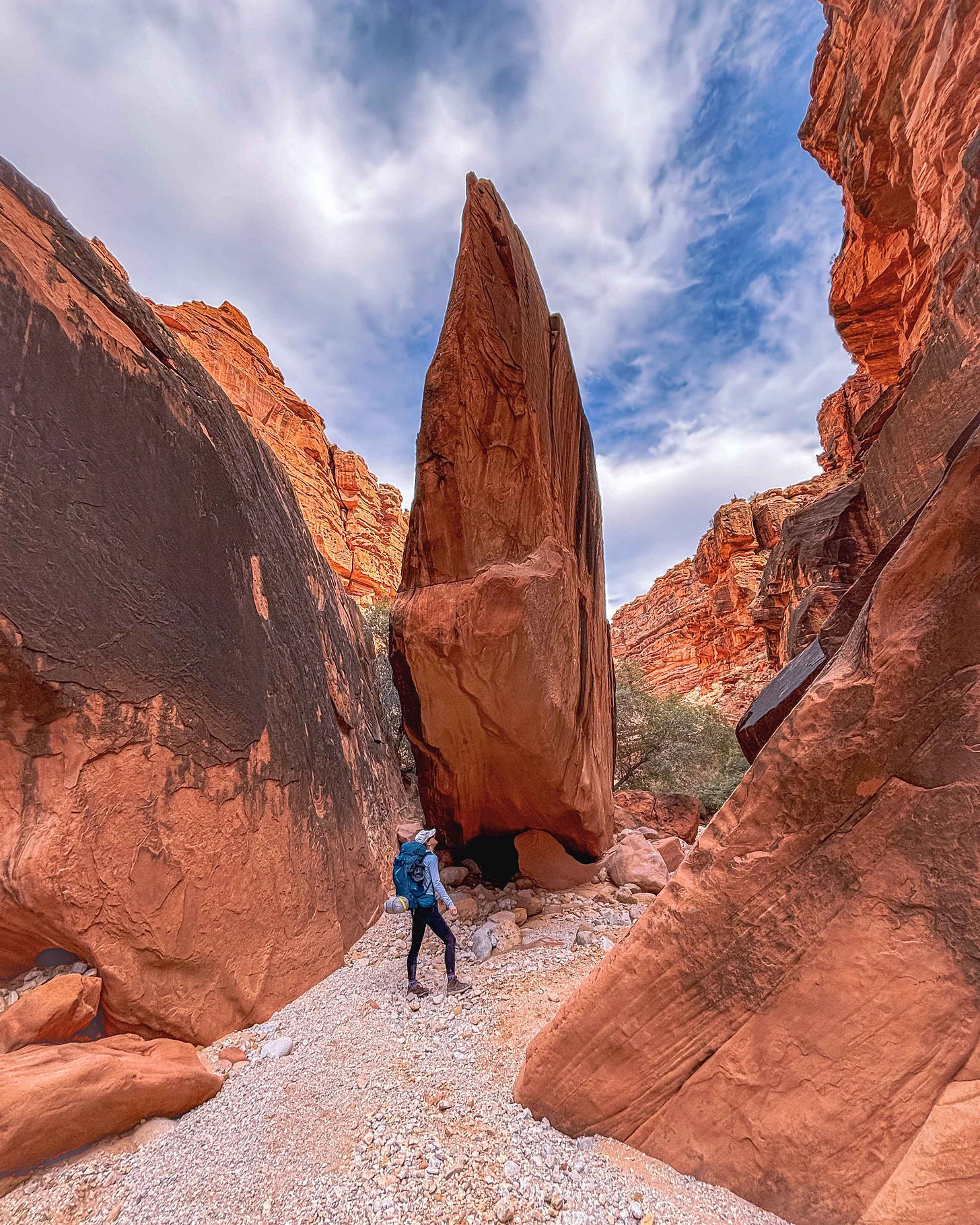
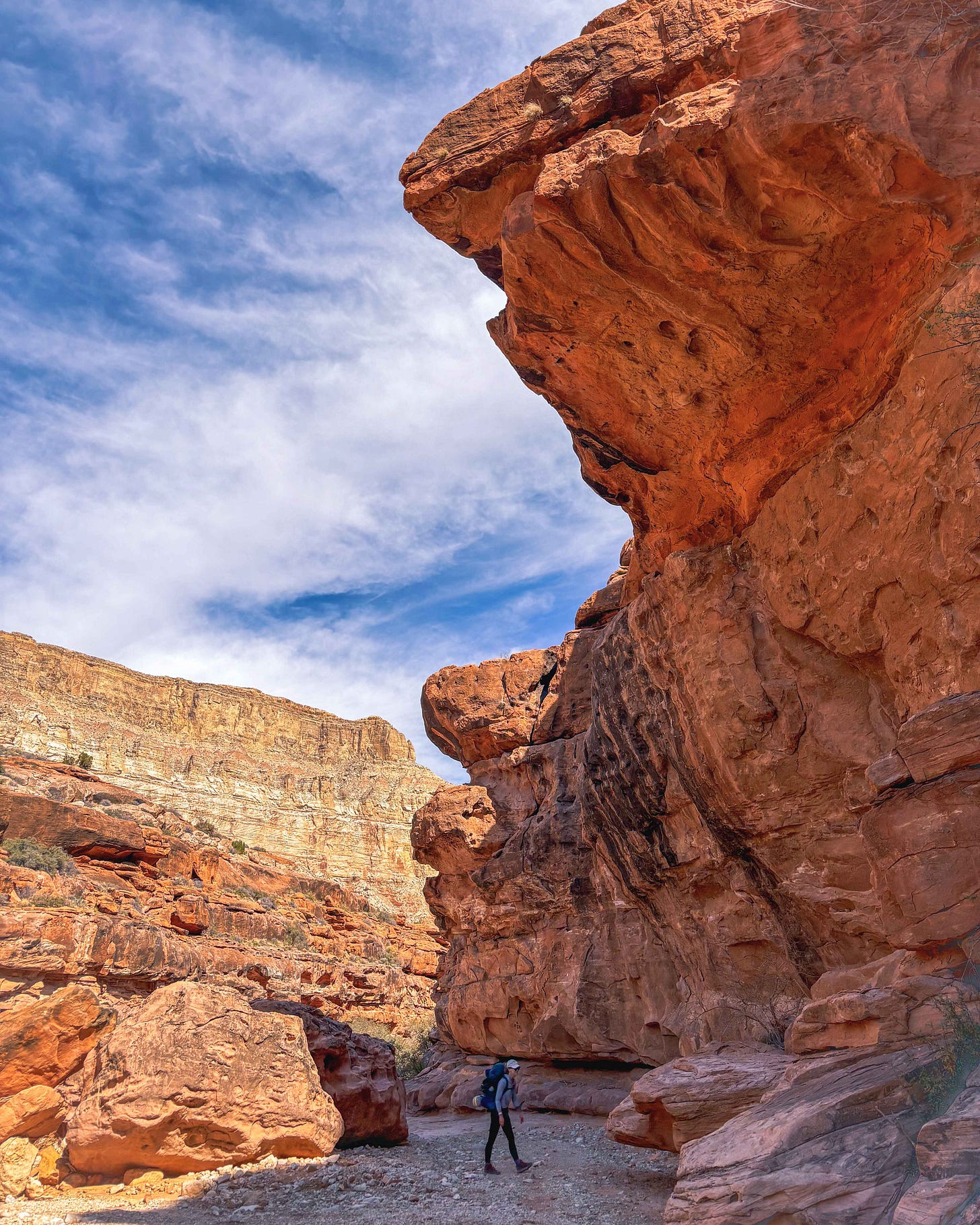
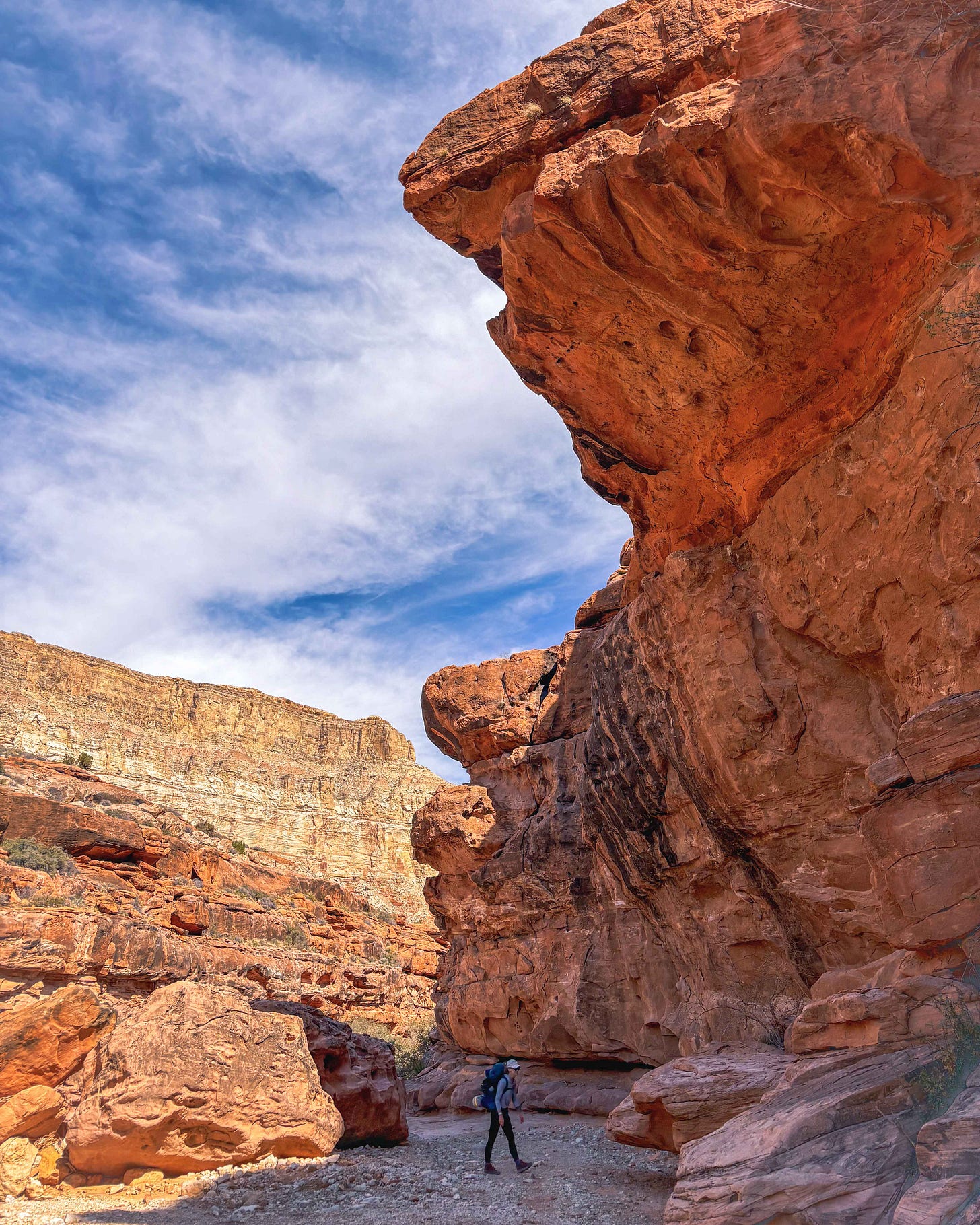
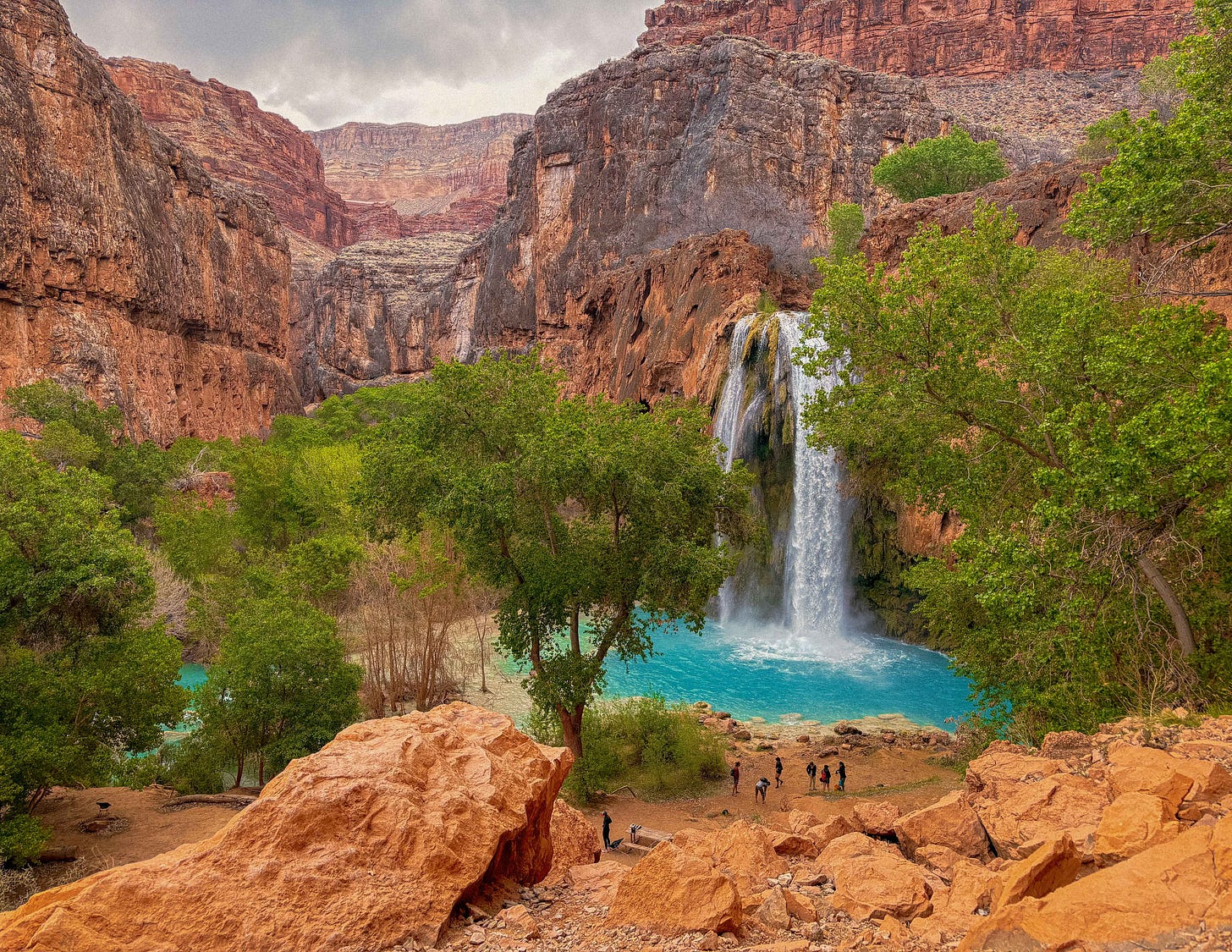
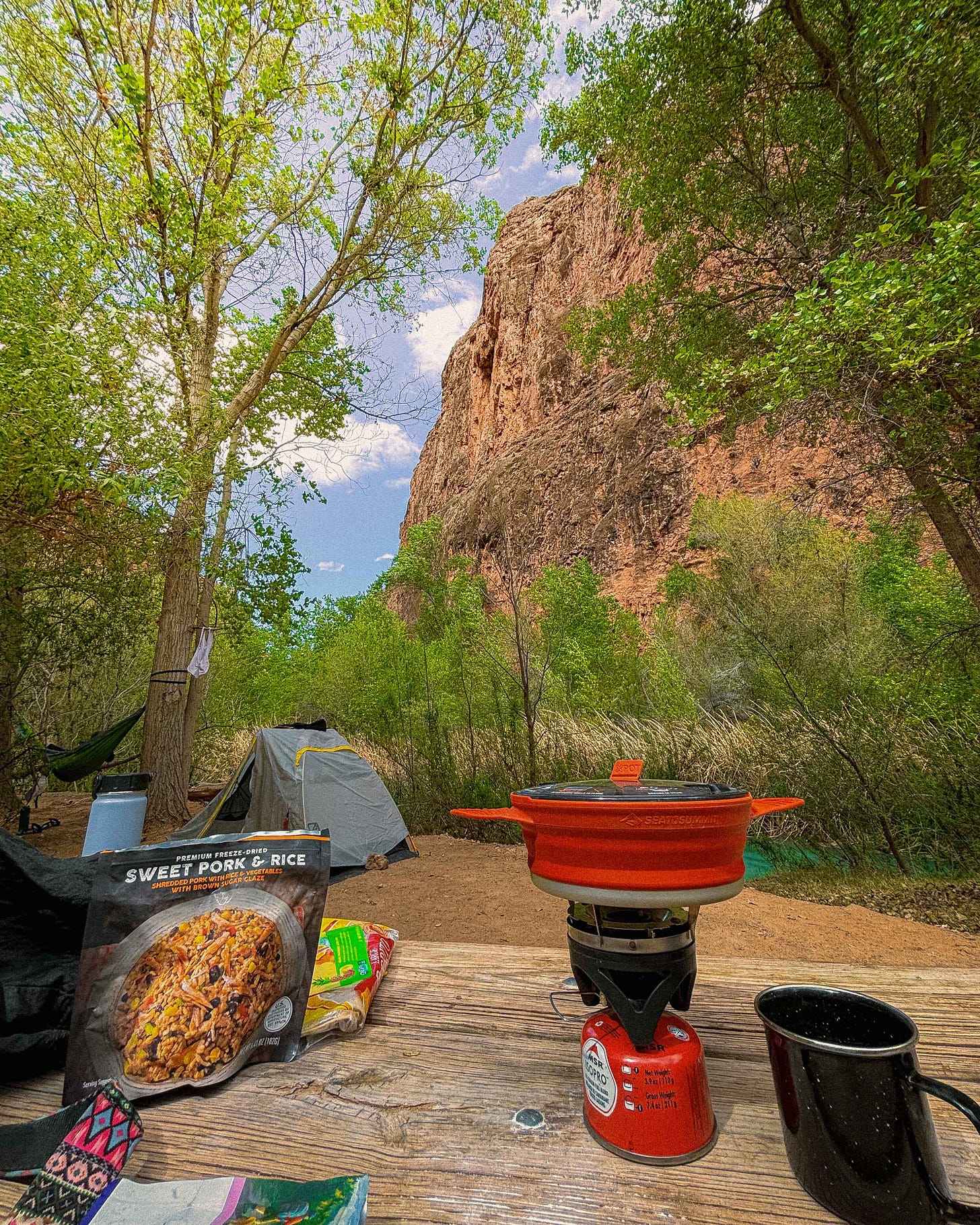
So glad you had a great trip! In October 2013, I took my first backpacking trip - with a group of friends who organized it. That trip happened to be to Havasupai. I brought home the best souvenir ever…my now 85lb big orange angel rez dog named Supai. At the time he was an 8 week old, 8 pound puppy. With the tourist season ending and snow forecast for the next day, they were very happy to have me take him - the last of his litter to find a home. I carried him out of the canyon. Yes, I hiked him out, had him checked by a vet in Phoenix the next day, and put him under the seat in front of me the day after that to fly home to Wisconsin. He’s my soul-dog, my adventure buddy, and best friend. With his intense orange eyes, with black eyeliner, I often get asked what he is. I love sharing his story, where he’s from, our story. He’s been a gift in my life. Always be open to unexpected blessings, even while backpacking. 🐾🧡🐾
Looks awesome! How do you think the hike compares to a trail like Bright Angel?